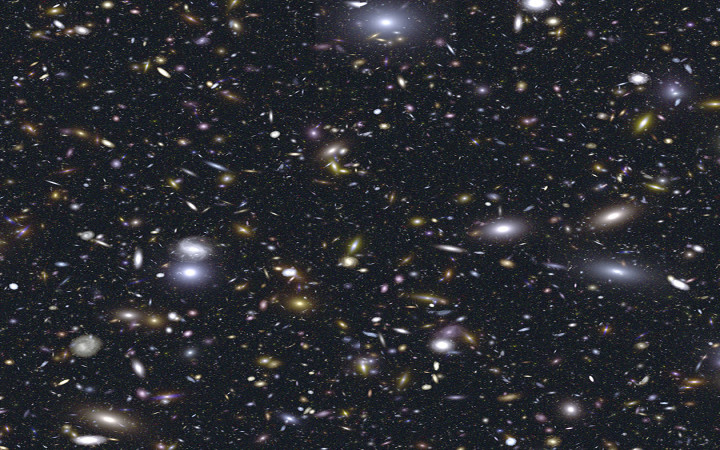Today’s Wonder of the Day was inspired by Kailey. Kailey Wonders, “Are there other galaxies in space?” Thanks for WONDERing with us, Kailey!
Ever since Galileo turned his telescope toward the stars over 400 years ago, our understanding of our place in the universe has continued to grow. As our understanding grows, our place in the universe has shrunk as we learn more and more about the massive size of the universe we live in.
Astronomers worked hard to improve their instruments. At the same time, they sought the best places from which to observe the stars. It did not take long before dark mountaintops became prime places to build observatories.
Eventually, technology allowed astronomers to make the largest leap in progress since Galileo's first telescope: the Hubble Space Telescope. Launched in 1990, the Hubble Space Telescope orbits Earth about 340 miles above its surface.
At this height, the Hubble Space Telescope has an unobstructed view of the universe. It's high above the clouds, light pollution, and distortion of Earth's atmosphere. It's able to take pictures of the other planets in our solar system as well as the galaxies in the farthest reaches of the universe.
For example, in 2003 and 2004, the Hubble Space Telescope was used to observe a small, dark area of space in the constellation Fornax. Data collected from many hours of observations was compiled into an image known as the Ultra Deep Field (UDF), which revealed thousands of unknown galaxies.
While the UDF was impressive and represented the deepest view of the universe that astronomers had ever seen, scientists knew that the Hubble Space Telescope could provide even more data. So they were patient and waited while more observations were made over the course of many years.
Eventually, astronomers were able to assemble what they call the eXtreme Deep Field or XDF. It's a composite image created from nearly 3,000 photographs taken over a period of 10 years by the Hubble Space Telescope. The total exposure time of the photographs used exceeds two million seconds or about 23 days! The XDF concentrates on a patch of sky that was at the center of the original UDF.
The XDF replaced the UDF as mankind's deepest view of the universe ever achieved. The full-color image reveals some of the faintest, earliest galaxies in the universe. These images were made possible by the Hubble Space Telescope's infrared camera.
Even though the XDF concentrates on an area that's a fraction of the original UDF, it contains approximately 5,500 galaxies! Scientists estimate the faintest of these galaxies are about one ten-billionth the brightness of what the human eye is able to see.
The XDF also gives astronomers the best glimpse of the history of the universe that they've ever had. How can a picture show history? The XDF doesn't show galaxies as they exist today. Instead, the galaxies are so far away that it takes their light unimaginable lengths of time to reach us. So the XDF shows these faintest galaxies as they used to be way back in time.
For example, scientists estimate that the universe is about 13.7 billion years old. Astronomers who have studied the XDF believe it reveals faint galaxies that date back approximately 13.2 billion years. In this way, the XDF gives astronomers an idea of what the first small galaxies looked like shortly after the birth of the universe.
The scientific value of the XDF is incredible. Some have referred to it as a "time tunnel into the distant past," since the youngest galaxy in the XDF likely existed only 450 million years after the universe began with the big bang. With the information provided by the XDF, scientists are now able to develop theories about how galaxies and the universe itself have changed over time.
Where will scientists explore next? The answer is likely even deeper into the XDF. NASA plans to launch the James Webb Space Telescope with even more sophisticated infrared vision. Aiming it at the location of the XDF, scientists believe they will be able to see even deeper into time when the very first stars and galaxies formed.





